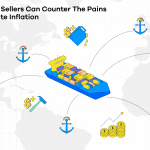
The latest news in the United States versus the Universal Postal Union (UPU) is promising.
Following two days of talks in only the third Extraordinary Congress session in the UPU’s history, the US has earned the right to set its own ‘self-declared rates’ when distributing foreign packages within its borders.
When the new rates go into effect this summer, the US will no longer spend $300-$500 million annually to defray the costs of Chinese imports under the previous agreement.
These subsidies have created a shipping cost imbalance. It could theoretically cost more to ship a package to your neighbor in the US than shipping the same package directly from China.
The new agreement changes everything.
The existing ‘contributions units’ ratios that currently determine international shipping rates between UPU countries will effectively become irrelevant in the cases of large-volume postal importers like the US.
Nations with lower postage volumes will also have the option to abandon the current ratio system and set their rates in the coming years.
Following this new agreement, the Trump administration has already indicated that it intends to use this new power to fight against China’s long-standing, exploitative shipping cost advantages.
How We Got Here
It all started last fall with the declaration that the US would be pulling out of the international postal treaty (one we have been a part of since Ulysses S. Grant was president).
For years, the US and UPU have argued that the formulas used to calculate the rates for shipping between UPU countries have not been updated since the 1960s.
As a result, many of the world’s largest economies (namely China) are receiving unfairly advantageous rates based on antiquated economic assessments.
With China’s growing presence in the e-commerce marketplaces and its ultra-cost-effective e-packet shipping option, American sellers have struggled to keep up.
With these latest UPU developments, American sellers may finally have a little competitive breathing room.
The Short-Term Implications
Had the worst-case scenario played out and the US withdrew from the UPU this month, American shipping would have been turned on its head.
Much of the current infrastructure associated with US international postage is tightly intertwined with the UPU.
Abandoning it altogether would have surely disrupted holiday shipping as e-commerce sellers and marketplaces waited for the US to renegotiate individual shipping deals with each of the other 191 UPU nations.
Even domestic shipping could have been crippled while new protocols and postal directives were formalized.
Thankfully, the deal negotiated to save the UPU will have minimal impact on international postage for the remainder of 2019.
America’s new rates will begin phasing in in July 2020, while most other countries (defined as any country that imports fewer than 75,000 metric tons of post per year) will have to wait until January 2021.
In either case, rate changes must be phased in over five years to help minimize the negative economic impacts.
In the short term, a global shipping disaster has been avoided, and things should continue without any catastrophic interruptions.
The Long-Term Implications
Looking down the road, it should be noted that once these changes start taking effect, any rate hike will almost certainly be passed on to the consumer.
This will hinder one of China’s largest current advantages when delivering products to American customers.
Without the favorable shipping rates currently offered under the existing UPU policy, Chinese imports (and imports in general) will likely cost Americans as much, if not more, than domestic alternatives.
This is great news for many US sellers who have been forced to reduce margins to try and keep up with international competition.
That said, this new agreement could pose serious problems for American ecommerce businesses that rely on foreign merchandise and international sales.
Increased import costs will tighten profit margins and potentially alienate entire markets of international customers.
In the long term, there is still a lot of ‘wait and see’ at play here.
Future postage rates and their overall impacts on ecommerce pricing are still in limbo until we get more specifics from the USPS and other high-volume international trade partners.
Furthermore, there is no telling what this move will mean for the ongoing trade war with China.
Ultimately, plenty more changes are coming as the impacts of these new UPU rules play out; however, you can make choices now to ensure your business maintains enough flexibility to adjust as these changes take shape.
Proactive Steps to Take Now
If international shipping is a significant part of your ecommerce business, consider a few key options before these UPU changes take effect next summer.
Thankfully, the Sellercloud e-commerce growth platform can be an invaluable partner in evaluating and implementing these decisions.
Partner with Third-Party Logistics (3PL) Companies
Partner with 3PLs in areas where your high-volume international customer bases are.
These relationships allow you to move bulk inventory quantities abroad so that international orders can ship from these stockpiles instead of your US warehouses.
The results are speedier, more cost-effective shipping options that appeal to both international customers and your bottom line.
Moreover, Sellercloud integrates with some of the world’s leading third-party logistics (3PL) providers, so you can easily track, manage, and maintain your international inventory and domestic supply.
Pay Attention to Your Import Expenses
Specifically for purchase orders from China.
Sellercloud can help you track key costs of goods sold (COGS) figures, such as taxes and duties, that will likely fluctuate in the coming months and years as these UPU changes roll out.
By tracking this data on a per-product basis, you should be able to stay ahead of the curve and make the pertinent adjustments to optimize your profitability.
As always, we will monitor the latest developments and fallout from this monumental shift in international shipping policy.
In the meantime, contact us directly to discuss how the Sellercloud growth platform can be your perfect partner through these turbulent times.





